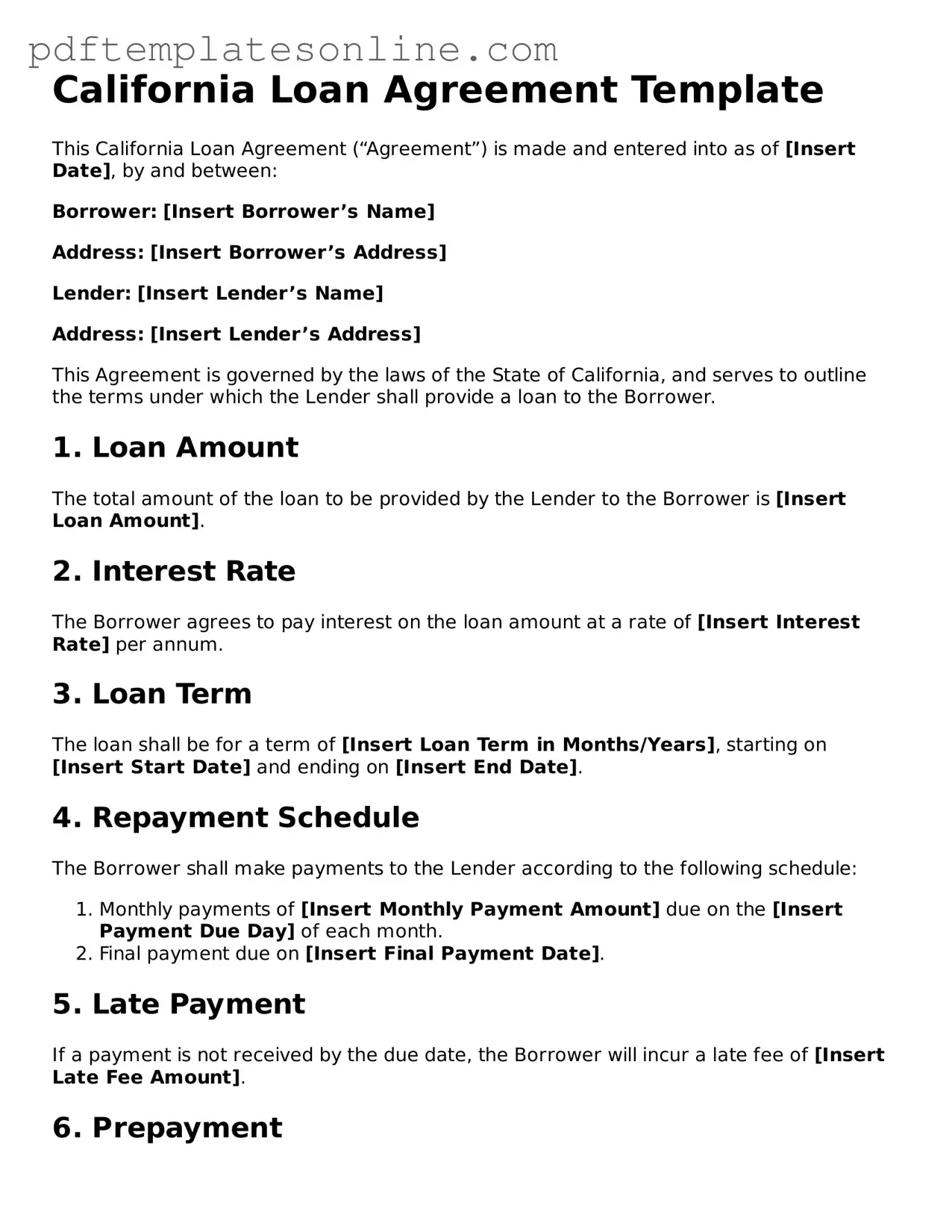Filling out the California Loan Agreement form can be a straightforward process, but many people make common mistakes that can lead to complications. One frequent error is failing to provide accurate personal information. Borrowers must ensure that their names, addresses, and contact details are correct. Inaccuracies can delay the loan process and create confusion.
Another mistake is neglecting to read the terms and conditions carefully. The Loan Agreement outlines important details such as interest rates, repayment schedules, and fees. Skipping this step can result in misunderstandings and unexpected costs down the line.
Some individuals also overlook the importance of specifying the loan amount. It is crucial to clearly state how much money is being borrowed. Ambiguity in this section can lead to disputes between the lender and borrower regarding the actual loan amount.
People often forget to include the purpose of the loan. Stating the reason for borrowing can provide context and help both parties understand the agreement better. This information can also be useful in case of any future questions or issues.
Another common error is not signing the document. A signature is a vital part of the agreement, as it signifies acceptance of the terms. Without a signature, the loan agreement is not legally binding, which can result in significant problems later.
Additionally, borrowers sometimes fail to date the form. Including the date is essential for establishing when the agreement was made. This information is important for tracking the timeline of the loan and any associated obligations.
Some individuals neglect to discuss the repayment terms with the lender. It is important to have a clear understanding of how and when payments will be made. Miscommunication can lead to missed payments and potential penalties.
Lastly, people may not keep a copy of the completed Loan Agreement. Retaining a copy is crucial for reference in the future. Having a record of the agreement can help resolve any disputes that may arise and ensures that both parties are aware of their obligations.
